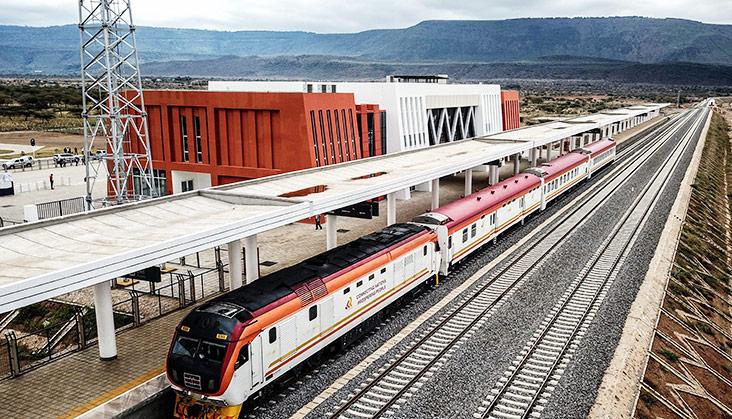Africa-Press – Lesotho. The rapid growth of many of Sub-Saharan Africa’s (SSA) markets is driving demand for transport and energy infrastructure. The deficit between current and future demand and access to infrastructure is, however, striking.
New estimates from the African Development Bank suggest that to keep pace with demand, African infrastructure requires between $130-$170bn a year. The same data set suggests that there is a current financing short fall of up to $108bn.
For access to infrastructure to meet demand there will need to be sustained investment from the private sector over the next decade.
The scope for expansion of access is vast.
Rail and road density in Africa are the lowest anywhere in the developing world and 80% of goods and 90% of passengers are transported by road.
Investors are increasingly interested in transport and energy infrastructure projects, in part due to their potential for long-term returns even in SSA markets known for being “challenging” and “risky” from a business transparency perspective.
Partnering with development finance institutions (DFIs) provides important concessional lending and governance structures around issues such as social and environmental standards, but careful thought and planning needs to be taken to mitigate the key risks.
Corruption is clearly a complex challenge and each country, industry and project is different. The work and experience of Kroll’s Africa Practice has highlighted some key risks.
The project origination phase continues to be a challenge from a transparency perspective. The way in which projects are tendered and awarded creates an obvious vulnerability to non-transparent practices.
The discovery of a corrupt step in the process can become a reputational concern for investors, affecting their ability to raise capital, particularly with DFIs.
Donor-led public policy support has sought to address the underlying issues associated with public financial management including reform of public procurement systems and the introduction of outsourcing to private companies, but this does not completely solve the issue.
The roots of corruption, including issues that can later emerge as reputational and commercial concerns as the project reaches development and commissioning, can also be found in the earlier phases of projects.
The way in which infrastructure project specifically in SSA are originated—and the central role played by governments—creates a corruption risk. The effects can take the form of inflated prices, poor quality execution, excessive time and cost overruns, inadequate maintenance and low returns.
Each of these impedes the overall contribution of new infrastructure to economic growth, and translates into reputational and commercial losses for the private investors.
Data from Kroll’s Global Fraud and Risk Report shows that construction, engineering and infrastructure are among the most corruption-prone industries, with 30% of firms experiencing a corruption related incident in the last 12 months, 7% higher than the global average.
According to the Organisation for Economic Co-operation and Development, half of bribes paid are in industries with the largest spending on infrastructure, primarily in extractives (19%), construction (15%) and transportation (15%).
Public-private partnerships (PPPs) and blended finance models are much more complex than traditional engineering, procurement and construction contracting practices.
As the scale of investment complexity increases, so does the opportunity to conceal misbehaviour.
For instance, PPPs can easily contain over 1,000 contractual links, each of them dependent on other contracts in the chain, with all of these providing a separate opportunity to pay a bribe.
At the same time, not only are financing models becoming more complex, but so is the regulatory environment of these projects, further increasing risks for investors.
Anti-corruption and bribery enforcement is on the rise, with new legislation emerging in many countries.
We now have a situation where private investors face three different levels of scrutiny.
More advanced economies have their own anti-corruption legislation which applies to business being conducted abroad, while others have at least ratified the OECD Anti-Bribery Convention (1997). Of these, the most rigorous legislation in place is the U.S. Foreign Corrupt Practices Act and the UK Bribery Act 2010, which are both extraterritorial in their application.
Investors are subject to scrutiny in African jurisdictions, with many African governments now tightening domestic regulations and increasing prosecutions.
By and large, this is happening for two reasons: either under the pressure of foreign donors tying their aid to reforms, or voluntarily to attract foreign capital. Foreign private investors need to be especially cognisant of these local prosecutions, because they are often backed by stricter legislation than that in the investor’s home country.
Lastly, investors have to account for examination by DFIs. Whenever involved in the financing of an infrastructure project, DFIs stringently monitor the project’s transparency, and wrongdoing by one project participant can lead to debarment for all involved.
The 2010 Agreement of Mutual Recognition of Debarments bans wrongdoers from co-financing in all signatory DFIs, not just the project in which they are currently participating.
In short, due diligence for these types of investments should mean going far beyond the cursory checks of regulatory-driven compliance. Investment managers must investigate projects thoroughly and in detail, including what people are saying about the projects.
A stakeholder analysis can reveal the winners and losers from the project and, in turn, provide guidance on any forward-looking risks.
It is too simplistic to ask if projects will deliver for the host country—investors need to know for whom in the country they deliver, when and how that could be put at risk.
However, this level of detailed analysis is difficult to achieve without a local presence.
Eyes and ears on the ground are essential if investors are to truly understand and factor in the unique risks, as well as the opportunities, that each country in the region presents.
Taking into account how misleading corruption perceptions can be, the biggest error can be judging an investment opportunity based on country-level indicators alone.
Instead, investors need to go deeper than this and consider the particular public entity in charge of the infrastructure project.
It can be the case that despite corruption in many other sectors, and potentially the public administration in general, the given institution has undergone internal reform or is headed by a public official with integrity and a commitment to transparency. In this case, investment in the project can prove fruitful, despite initial appearances.
For More News And Analysis About Lesotho Follow Africa-Press






